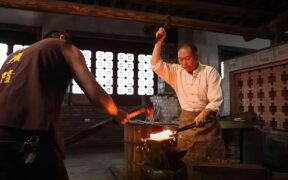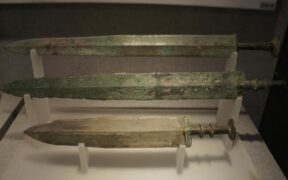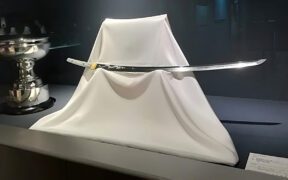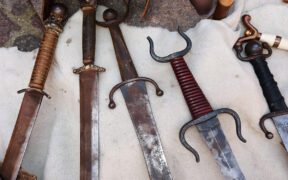History of Chinese Swords: 11 Eras of Chinese Blade Evolution
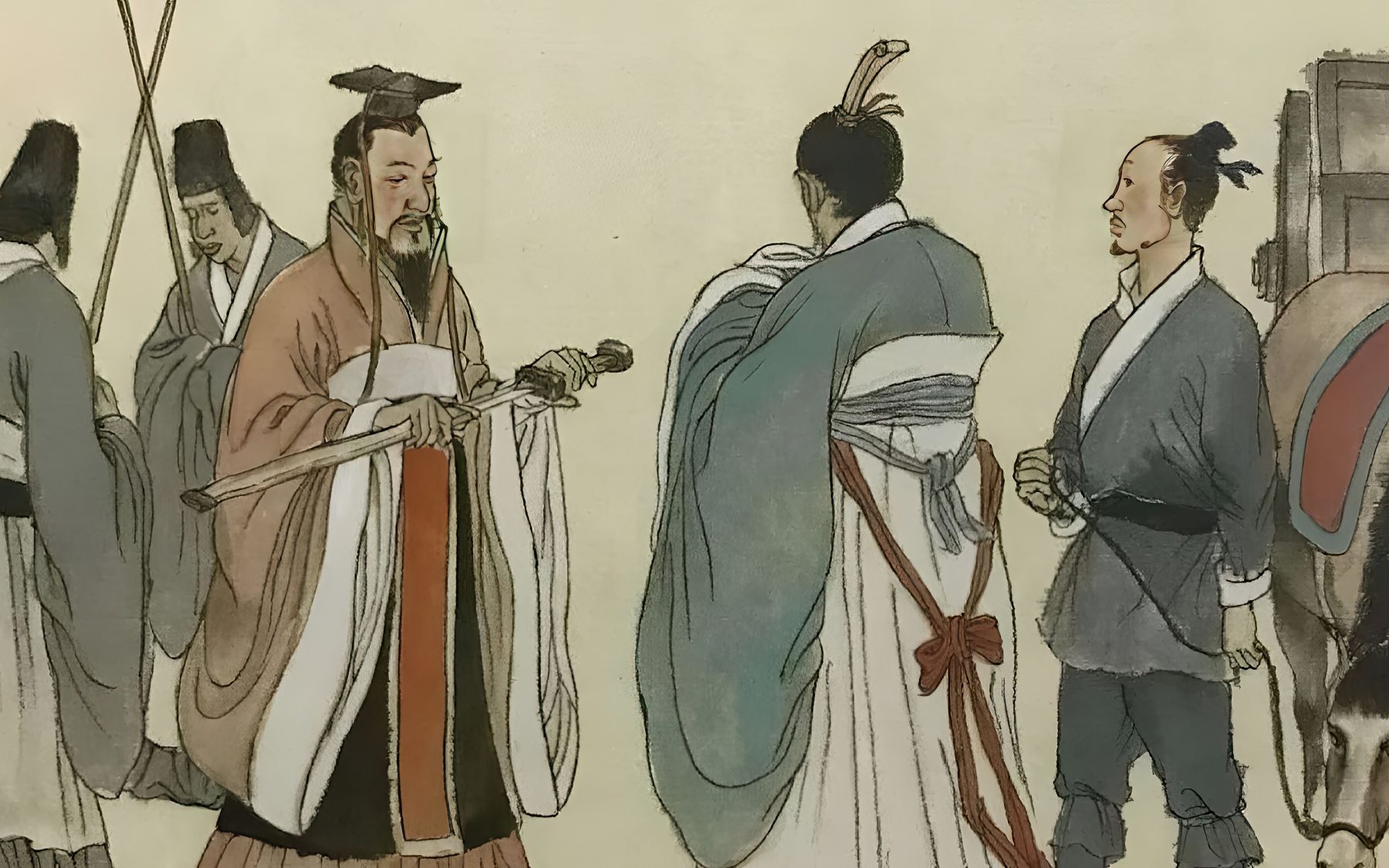
The history of the Chinese sword reflects the history of China itself. Stretching back over 5,000 years, the evolution of the Chinese blade has been painstakingly precise, the result of years of progress in metallurgy, culminating in some of the world’s most superior edged weapons. This extensive history can be divided into 11 distinct periods, each marked by its own unique context and a newly designed sword.
In this article, we will explore these 11 eras and introduce the notable developments of each period. You’ll gain insights into how these blades evolved and became more adaptable.
Swords in Chinese History
| Time Period | Description |
|---|---|
| Legendary China & Xia Dynasty (~3000 – 1600 BCE) | Ceremonial Prototypes of Chinese Swords made out of copper and bronze following the pattern of the previous daggers |
| Shang Dynasty (1600 – 1046 BCE) | Bronze Chinese Swords that could be battle effective and represented authority, rank, and prestige |
| Zhou Dynasty (1046 – 256 BCE) | Creation of the first Chinese Iron swords that would change the outcome of some battles |
| Qin Dynasty (221 – 206 BCE) | A fast technological advancement to increase the quality of iron to produce larger, sharper, and better swords |
| Han Dynasty (206 BCE – 220 CE) | The peak of sword creation in ancient China resulted in quality double and single-edged steel swords that were extremely effective in battle |
| Sui & Tang Dynasties (581 – 907 CE) | The golden era for swordsmanship and the creation of the quality blades that gradually replaced the double-edged Jian with the single-edged Dao |
| Song Dynasty (960 – 1279 CE) | The creation of large single-edged broad blades that could be used against armor and mounted units |
| Yuan Dynasty (1271 – 1368 CE) | The change from large swords as primary weapons to smaller curved single-edged swords that could be effective while mounted |
| Ming Dynasty (1368 – 1644 CE) | The Dao curved saber is the main weapon of war resulting in many different variations while the Jian is officially an instrument of rank and training |
| Qing Dynasty (1644 – 1911 CE) | Less armored units and the use of rifles led to broader and simpler Dao swords that could chop effectively and effortlessly |
| Post Qing & Modern Times (after 1911 CE) | Broad smaller blades used for self protection during the World Wars and using flexible non lethal Wushu swords for Chinese martial arts today |
Since China’s military tactics and requirements evolved with each dynasty, the country’s arsenal of swords has changed dramatically over the centuries. The availability of new materials and the development of creative forging methods were also essential. The blades that changed the course of history were forged by Chinese swordsmiths as their metallurgical expertise improved through time.





The art of Chinese sword making was shaped by both periods of peace and internal stability, as well as external conflicts, particularly from the northern plains. As different needs emerged over time, so did the variety of swords, evolving and adapting to the demands of each era. This continual innovation led to an array of unique blade designs that would eventually influence neighboring cultures, notably inspiring the creation of the renowned Japanese swords we recognize today.
Legendary China & Xia Dynasty (~3000 – 1600 BCE)
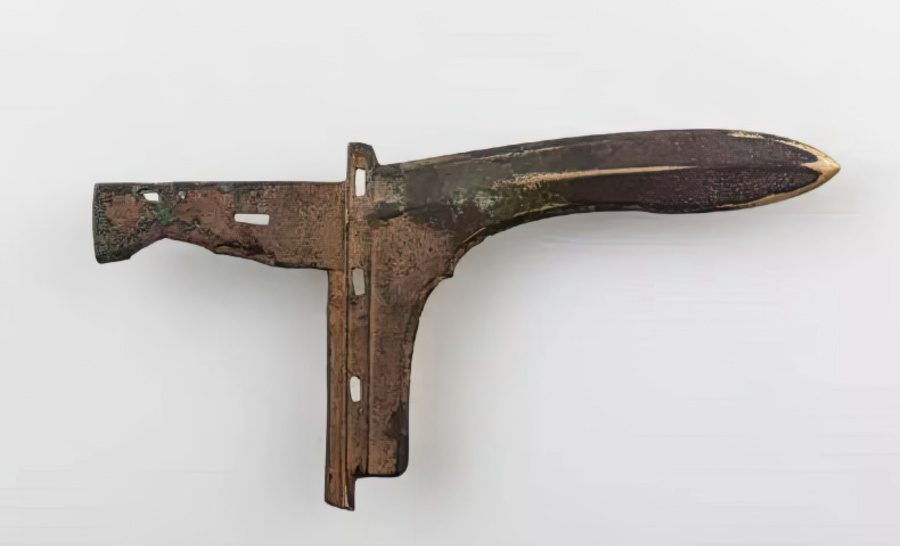
The precursor to the Chinese sword was the Chinese Dagger, a tool that evolved from everyday utilities when the demand for more powerful weapons emerged. Given the limited technological capabilities at the time, these early Chinese swords were small and primarily constructed from copper, serving mainly ceremonial purposes.
However, as technology progressed, bronze swords were introduced and came to represent a symbol of authority. Although they weren’t extensively used in battles even during the Xia Dynasty (2070 – 1600 BCE), these early ceremonial swords were held in high esteem and valued greatly.
- Chinese Dagger
- Copper Swords
- Bronze Swords
Shang Dynasty (1600 – 1046 BCE)
During the Shang Dynasty, China produced some of the earliest known swords that were truly functional in warfare, as opposed to earlier swords that were merely ceremonial. Several bronze Zhibeidao, also known as straight-backed blades, were discovered in the tomb of Fu Hao, a great queen, high priestess, and army general who lived and died around 1200 B.C.
Swords and knives from this era tended to be shorter than steel swords of later eras due to the brittleness of bronze. Regardless of their size, the presence of swords, knives, or sword knives, as they were sometimes called, in the tomb of a ruler often indicated their high status.
- Copper Swords
- Bronze Swords
- Zhibeidao
Zhou Dynasty (1046 – 256 BCE)
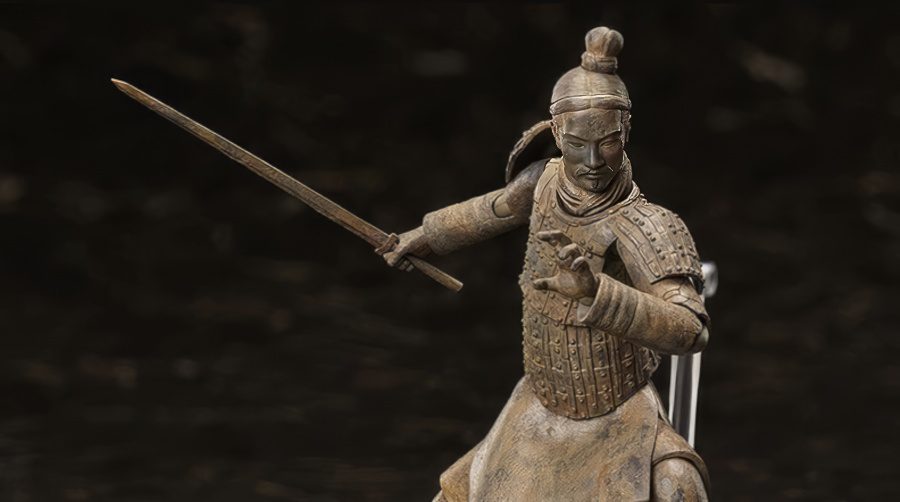
Real military use of bronze and iron double-edged swords likely began during the Spring and Autumn Period of the Zhou Dynasty, around 770 B.C.E. During this time, sword-forging technology flourished. By the end of the Zhou Dynasty, during the Warring States Period (476 – 221 BCE), iron and steel Jians appeared alongside their bronze counterparts.
A number of the peasant population were being recruited to fill in the ranks of the state’s armies. This required maneuverability in battles, something the sword could easily accomplish. Slowly but surely, iron swords took over, and whoever could create the most became the winner of all the warring states.
- Long Quan
- Iron Jian
- Duan Jian
Qin Dynasty (221 – 206 BCE)
In ancient texts, the states with the most iron and steel swords were Qin and Han regions and dynasties. The Qin Dynasty is remembered for its ruthless military campaign that led to China’s unification as an official empire, also giving it its current name. Remnants from the Terracotta Army found today date back to the Qin Dynasty.
These terracotta soldiers were constructed for the tomb of Qin Shi Huang, where he was buried with battle-ready weapons, most of them being Jians that measured as long as 37 inches. The introduction of cavalry horsemen and high-quality swords that were thinner, stronger, and sturdier, allowed them to pierce through armors and their gaps, giving the Qin Dynasty its victory.
Han Dynasty (206 BCE – 220 CE)
Learning from the past and realizing the need to increase the metal bellows, the Han Dynasty saw an explosion of innovation and quality in steelmaking. During this era, the ring pommels were invented and the higher quantity crafting of the Dao swords, which were still straight but single-edged.
These were also in high demand because fearsome cavalry was widely used by the Han. The Jian was improved upon, but the Dao was not only easier to create but also as effective. Slowly the Jian became an aristocracy and nobility sword because it was harder to master. Thanks to the improvements in sword metallurgy, Han dynasty swords would become a staple in Chinese history.
- Han Jian
- Shuangshou Jian
- Han Dao
Sui and Tang Dynasties (581 – 907 CE)
The remarkable sword manufacturing of the Han dynasty persisted during the three hundred years of political upheaval that followed its downfall. During the Sui dynasty, China was partly reunited for a very short time. Sui Dynasty swords, while argued by some Chinese scholars, might have brought the need for stronger and higher quality blades. However, it was during the Tang Dynasty that these pioneer swords would reach their peak.
During the Tang era, the Tang Dynasty Swords were the envy of all and inspired the most popular Asian swords today. They were often used in territorial conquests and played an even bigger role in ceremonies, martial arts training, and sword dances. The sword’s high status is one of the factors why this part of Chinese history is considered the golden age.
- Sui Dao
- Tang Heng Dao
- Zhanmadao
Song Dynasty (960 – 1279 CE)
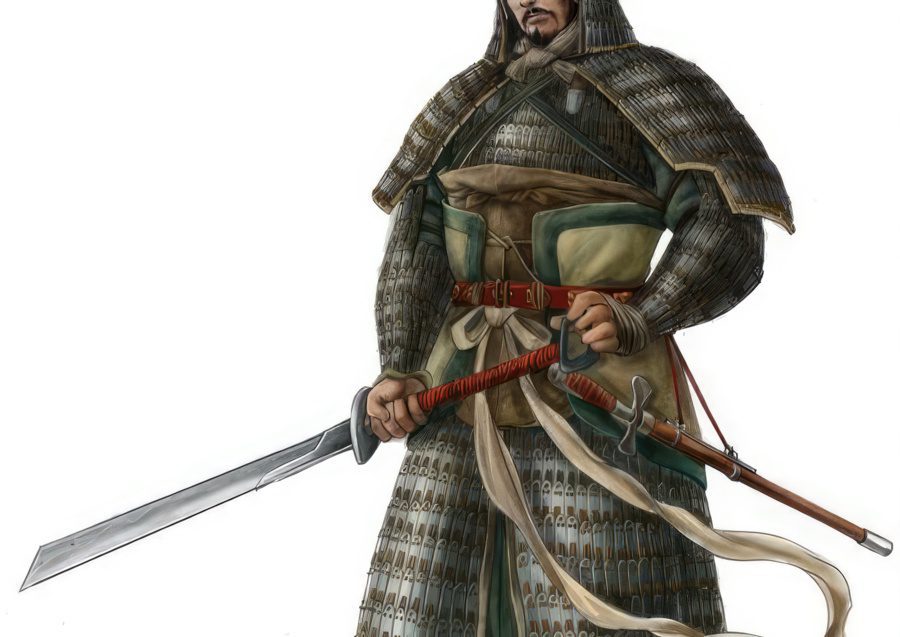
After 50 years of internal political warfare following the fall of the Tang dynasty in the 10th century, artisans in the Song Dynasty saw the need to make inexpensive standardized swords that could be redistributed, fixed, and easily replaced. This resulted in straight, wide, and hefty cutting swords that could be used with two hands.
Due to the Mongol influence from North China, single-edged and straight broad blades fell out of use, and were replaced by curved Dao swords as they were more effective on mounted units. In the military manuals of the Song dynasty, the primary sword in use was the Song Hand Dao.
- Song Hand Dao
Yuan Dynasty (1271 – 1368 CE)
ring the Yuan Dynasty, the Turko-Mongol saber inspired many versions of the Dao. Although the influence of the northern sabers made a big impact on Chinese swords, there were softly curved blades in China even before this. Their creation most likely came from a need to create a secondary weapon that would be cheaper and easier to maintain, while being effective and easy to wear while mounted or on foot.
Although this dynasty was short-lived, it saw one of the biggest and most drastic changes in China’s weapons. After this period, Chinese daos featured curved blades and became the main sword of war both for the infantry and cavalry units.
Ming Dynasty (1368 – 1644 CE)
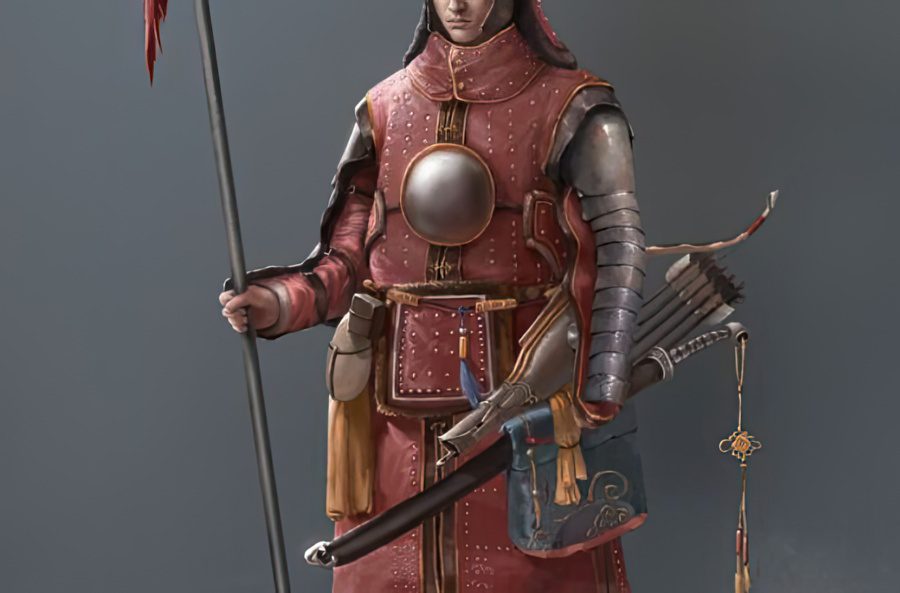
The influence of curved Mongol sabers held strong for hundreds of years well into the Ming and Qing Dynasties. The Dao was the main sword used in battle, combined with the regular long spear or polearm. Daos in this period were becoming larger, and some could be used two-handed. During this period, the Chinese sword would also be used during their battle with the Japanese.
The straight Chinese Sword, or the Jian, became more sophisticated and was linked with high aristocracy. It was used in duels, such as the European style of fencing, where only martial artists could truly master it.
- Hook Sword
- Wodao
- Nandao
- Piandao
- Changdao
- Liuyedao
Qing Dynasty (1644 – 1911 CE)
Although high-quality Jians and Daos were made during the early Qing era, the art of Chinese sword making began to deteriorate around the middle of the nineteenth century. The Opium Wars, famines, and civil unrest strained the country, and as firearms became more widely used by the military, the necessity for mass-produced swords declined.
Blades that were simple, primitive, and cheap to produce were mostly used by Chinese civilians and militiamen during the late Qing period.
- Dadao
- Butterfly Sword – Hudiedao
- Niuweidao
- Yutoudao
- Duandao
Post Qing Dynasty (after 1911 CE)
After the Qing Dynasty, when China was in chaos due to the wars of the 20th century, even firearms were hard to obtain. But the use of the Dao came back, and the patriotic Chinese song, The Sword March, emerged. With peace on the horizon, Chinese Wushu swords emerged. These highly flexible and non-lethal blades are today’s most popular Chinese swords to use in martial arts.
